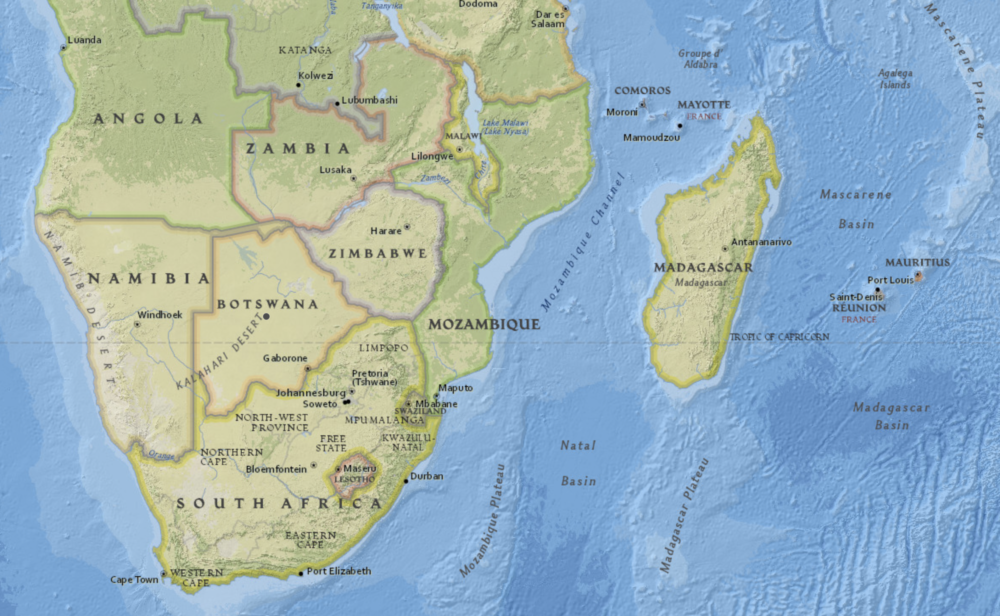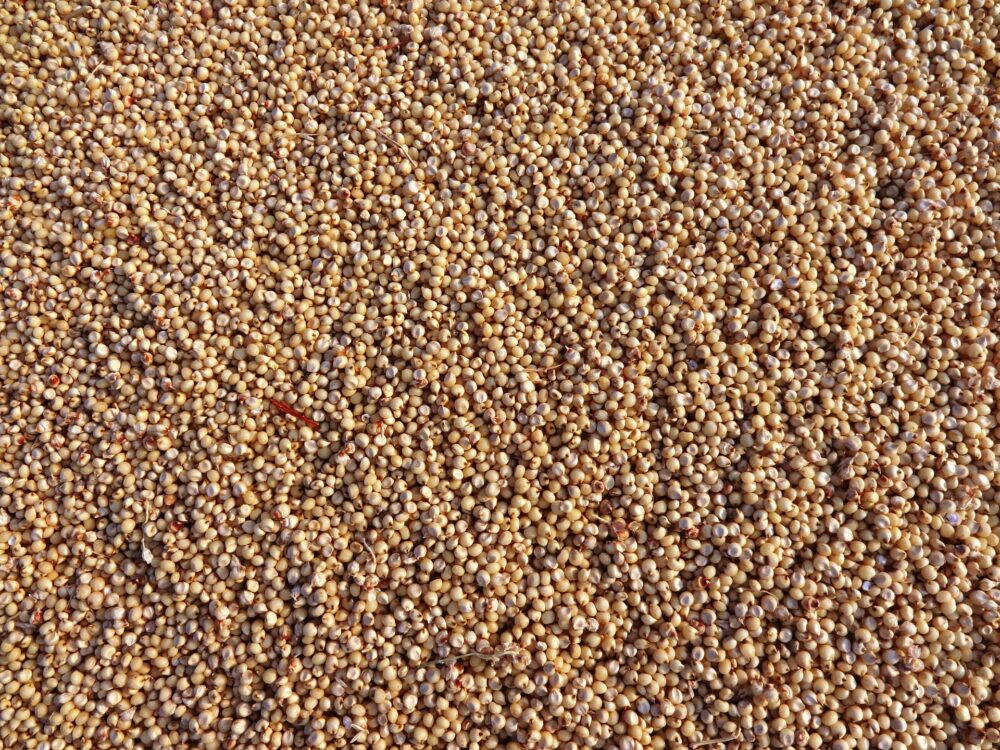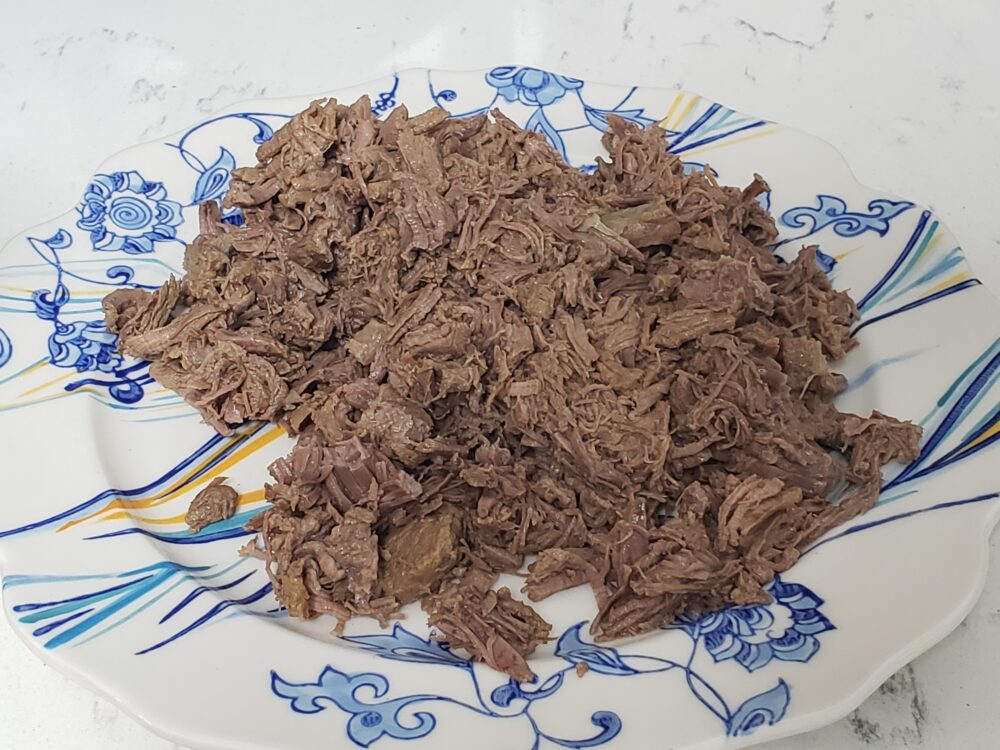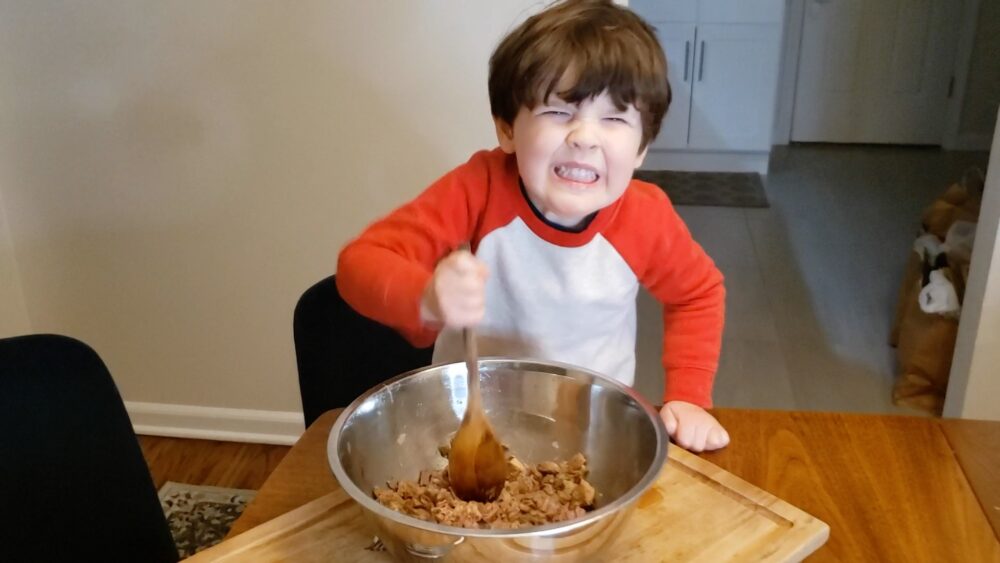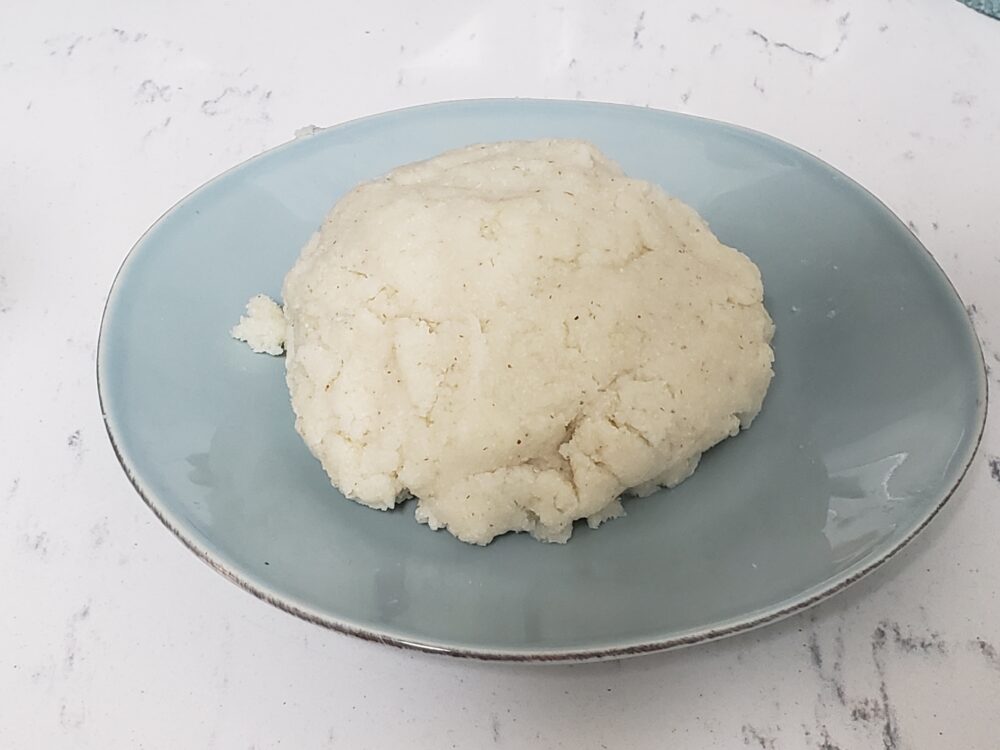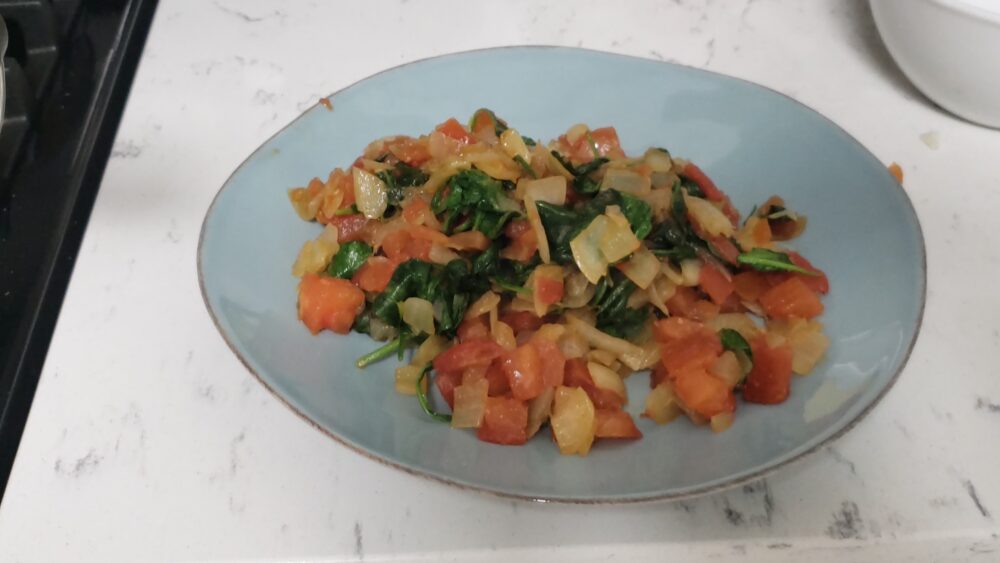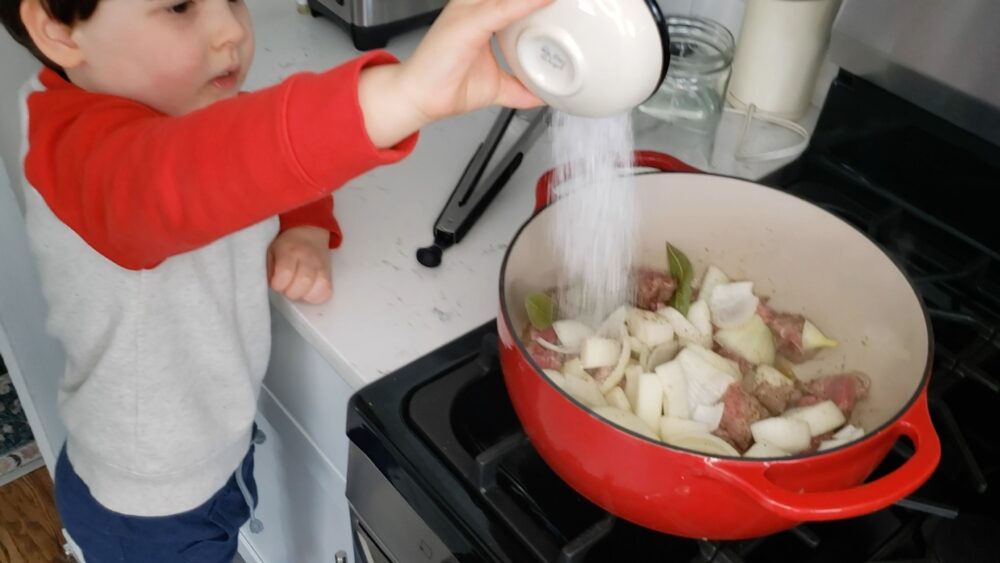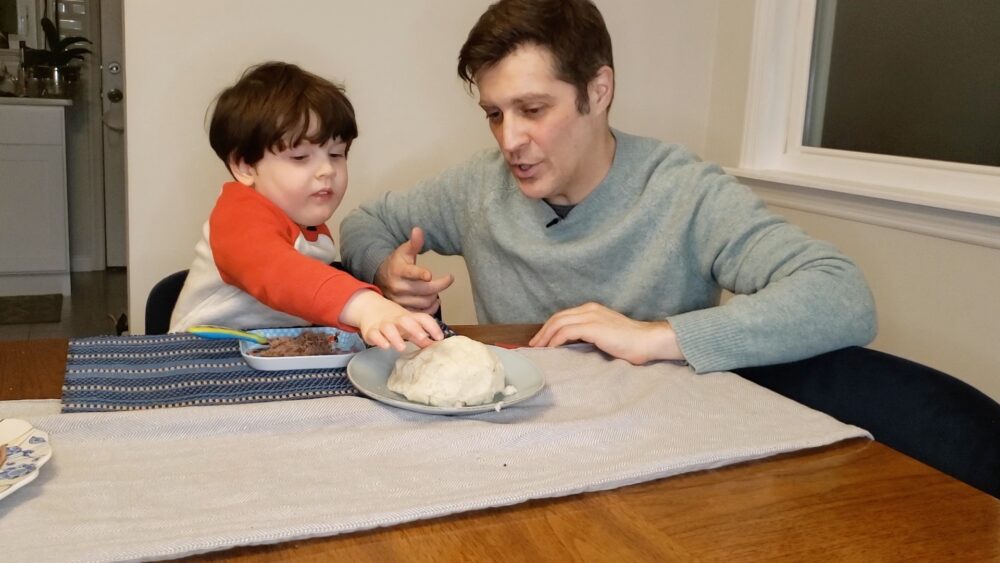Thanks to large deposits of diamonds, Botswana is no longer the massively poor country it once was. Since the 1980’s it’s been one of the leading producers of gem diamonds in the world. Although there is still an unfortunate amount of poverty, the country itself is now one of the wealthiest in Africa.
Neither Sam nor I are particularly impressed by bling. I’m most interested in the country’s adventurous cuisine. And Sam, of course, would love to see some of Botswana’s other large attractions: elephants. Together that would make one heck of a trip.
THE PLACE AND ITS CUISINE
Botswana is a landlocked country situated in the center of Southern Africa. It’s right above the country of South Africa and sandwiched between Namibia and Zimbabwe.
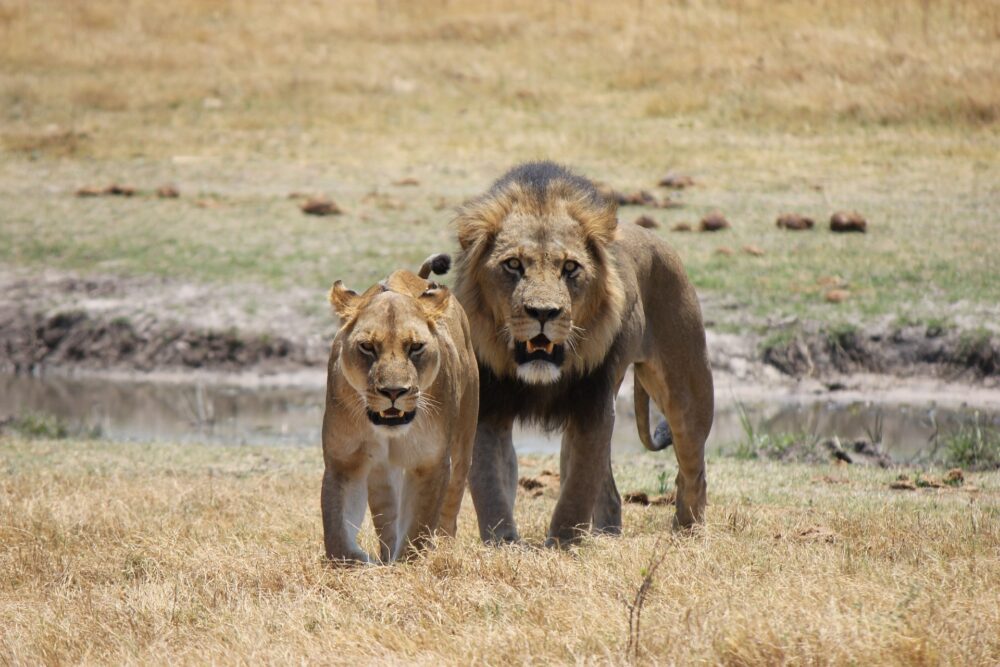
Many people travel to Botswana for the safaris and to get a view of some beautiful animals. Thankfully elephant and lion are not on the menu, but other meats, like lamb, goat, oxtail, and even mopane worms (a caterpillar) find their way onto plates.
Porridges of cornmeal, sorghum, or millet are part of most meals, along with peas or beans. Fruits and vegetables are also very common often mixed into stews or porridges.
And many meat dishes are either barbecued or cooked in a large three legged pot. I really need to invest in a three legged pot!!
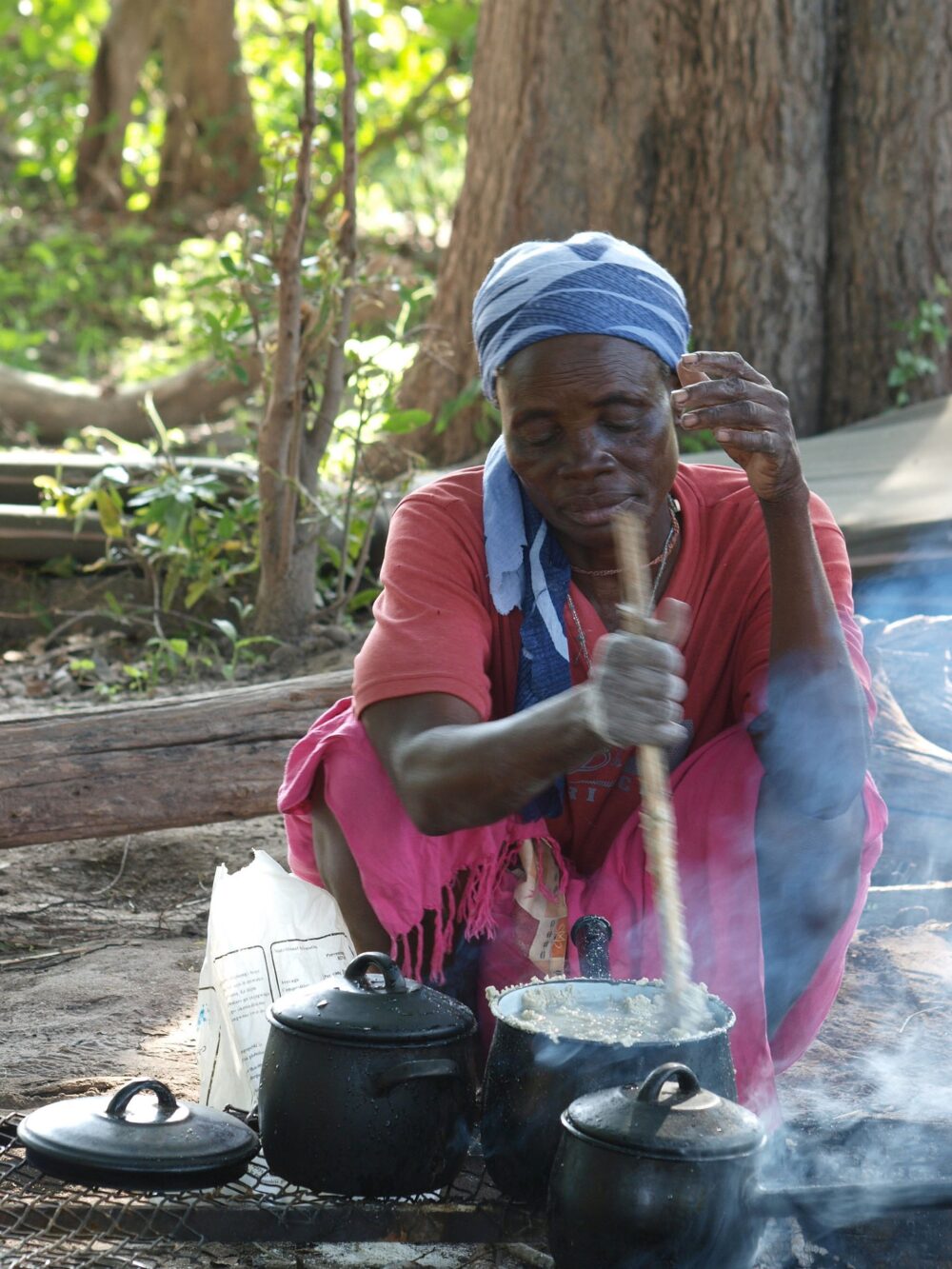
Other traditional dishes that we need to try one day include:
Vetkoek – a fried bread known as “fat cake”, similar to Caribbean johnnycakes
Matemekwane – a very popular fried dumpling sometimes stuffed with meat or vegetables
Dikgobe – a porridge of peas, beans and samp (dried and processed corn kernels)
Bogobe Jwa Lerotse – another porridge made of the lerotse melon (similar to a watermelon, but less sweet) and thickened with sorghum and sour milk
SETSWANA FOOD IN NEW YORK
The food of Botswana is another one that is very difficult to locate in New York. There are a few South African restaurants (like Kaia), but none specializing in Setswana food. There are festivals and events from time to time that feature homecooks sharing this cuisine. And I urge you to seek out one of those when possible.
But until then, you might just have to do as we do and make it yourself.
THE VIDEO
How has my four year old become so strong? Maybe it’s from making all of these cooking videos. He’s done mixing, stretching, peeling, and now add pounding to that list of skills.
What normally takes a group of grown men (pounding the cooked beef), Sam manages to do all by himself.
He also inadvertently makes some pretty hilarious puns about the cornmeal mixture called pap (pronounced “pop”). Better than any Dad joke I could possibly come up with.
THE DISHES

From my research, it seems these three dishes are almost always served together on special occasions. And I think it provides a well-balanced meal. You’ve got protein, starch, and vegetables.
We’ll start with Seswaa, which is often considered the country’s National Dish. It seems to most often be made from beef, but lamb or goat are also common.
it doesn’t get more simple than this. The meat is boiled slowly in salted water with onions. That’s about it. Sometimes bay leaves or black pepper are added, but anything more extravagant than that is considered sacrilege.
Despite its simplicity, it is usually an all day affair leading up to a special occasion like a wedding or funeral. And it would be prepared over an open fire in a three legged pot called a potije. This is traditionally done by men and after the meat is cooked, they would remove it from the fire and pound it with wooden pestles until it’s shredded and mashed.
We toned down the technique a bit for our home kitchen. But we ended up with a nice plate of shredded tender beef.
The Seswaa is usually served on some pap. Pap goes by many names across Botswana and Africa. Sometimes called phaletshe or mieliepap or ugali. In the same world as the funje we made from Angola, it’s a mixture of white cornmeal and water. It’s cooked until stiffened into a porridge and can be used as a vessel to soak up the juices and flavors from a sauce, or in this case the cooking liquid of the Seswaa.
And for a little color and vitamins, a portion of cooked greens and tomatoes is usually served with the main course. We are using the name morogo for our dish, but technically we made baby spinach.
Morogo itself is a Setswana word that refers to a number of different leafy greens, like cowpea, amaranth, or spider flower. It’s also usually mixed with pumpkin leaves and has a bitter flavor. I’ve seen morogo referred to as wild African spinach. So I thought since the morogo was difficult to find, baby spinach would be a close substitute. It’s simply sautéed with tomatoes and onions.
THE RECIPES
Inspired by Mama Boi’s Kitchen
Seswaa, Pap and Morogo from Botswana
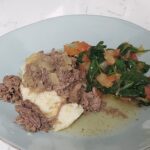
This is a classic Botswana combination of dishes, especially during a special occasion. Simply boiled and salted meat is pounded until soft, served with the classic cornmeal porridge, and a side of local greens.
Seswaa (Meat)
- 1.5 pounds cubed stewing beef (preferably bone-in)
- 2 tbspn cooking oil
- 2 onions (peeled and roughly chopped into large chunks)
- 3 bay leaves
- salt (to taste)
- black pepper (to taste)
- water
Pap
- 1 cup white corn meal
- 2 cups water
Morogo
- 1 bunch morogo, pumpkin leaves, or baby spinach
- 1 onion (diced)
- 2 tomatoes (diced)
- salt (to taste)
Seswaa
Cooking Meat
-
Add oil to large pot or Dutch oven over medium high heat. Sear beef until slightly browned.
-
Add onions, black pepper, salt, bay leaves, and enough water to just cover the meat. Bring to a boil.
-
Lower to a simmer, cover, and cook for 4 hours.
Pounding Meat
-
When meat is cooked, remove and place in large bowl. Continue to cook the cooking liquid while pounding meat.
-
With a wooden stick or spoon, pound the meat until it all breaks apart and is soft.
-
Serve with pap and some cooking liquid.
Pap
-
Bring 2 cups of water to a boil. Slowly stir in the white corn meal. Whisk constantly until it thickens.
-
Lower the heat to low and mix with wooden spoon until smooth and combined.
-
Cover the lid and simmer for 15 minutes, stirring from time to time.
-
Cook slow at low heat. Keep an eye on it and if it starts to stick to the bottom, add a little water.
-
Continue to mix to forma smooth consistency. Cover again and let cook at low for another 5 minutes.
-
When it starts to come away from the pan, it is ready, Mix again before serving.
Morogo
-
Sautée onion in large pan over medium until starting to brown. Add salt and diced tomatoes. Stir for 4 more minutes.
-
Add morogo or baby spinach. Cook for 8 minutes while stirring occassionally.
HOW WE SCREWED IT UP
I always think it’s difficult to screw up slowly stewed beef. And that was mostly true here. The Seswaa ended up being nicely salted and tender.
The recipes I consulted didn’t have a specific amount of salt listed. They often said “use the exact amount of salt necessary.” I started with 2 teaspoons and it seemed to be the right amount.
Bone-in beef is the best to use for this recipe, but we were not able to easily locate it and to save ourselves a bit of work, we used the boneless cuts. No doubt more flavor could have been extracted from the bones. But despite the lack of bones, this was a hearty tasty dinner.
If you saw our Angola video, we made a similar dish to pap called funje. I think I did ok with that one (which is made with cassava flour), but the pap was a bigger hit on the table.
The morogo that we made was rather forgettable. Baby spinach isn’t as exciting or exotic, I’m sure, as the bitter greens the traditional recipe calls for. I also didn’t have nearly enough spinach and as spinach does, it cooked down to almost nothing and we were left with a plate of mostly tomatoes and onions.
SAM’S REACTION
Sam was so intrigued by the pap (maybe because of the name), but he never fully committed to trying it. He put a tiny bit on his finger and kind of put it to his mouth. On its own it doesn’t have much flavor, so he couldn’t have been overjoyed or disgusted with a small amount.
Since the point is to include the pap in the beef sauce and Sam is not a fan of all his food touching each other, he didn’t really get the full experience.
He did however eat the shredded beef, but freaked out when he caught a little bit of onion hiding among the meat. Once I took out all trace of vegetables, he seemed to be happy with it.
NEXT TIME
The country known for soccer, rainforests, beaches, and Carnival is one of the biggest we’ve encountered on our adventure so far. And it’s food is just as big and bold – get ready for us to tackle the giant country of Brazil….

